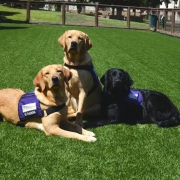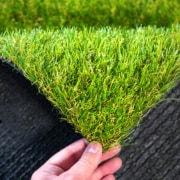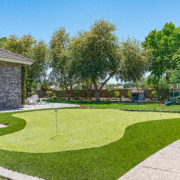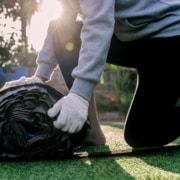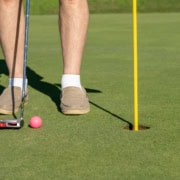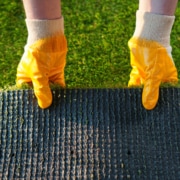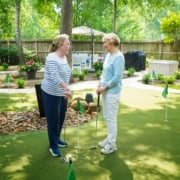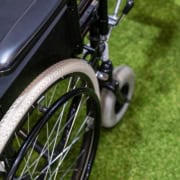5 Ways Turf Grass Will Elevate Your Home Landscaping
Homeowners looking for a cost-effective, low-maintenance alternative to natural grass may be interested in synthetic turf installation. While artificial grass has had a reputation for looking plastic and unappealing in the past, recent innovations have put this lawn alternative miles ahead of its natural counterparts. Residential turf can now elevate your lawn to new heights!
Artificial grass products are quickly becoming the preferred choice for homeowners looking to boost curb appeal, increase comfort, guarantee health and safety, and enjoy versatile landscaping options. Artificial turf installation will make your lawn the envy of the neighborhood while saving you money and time. Read on to learn how synthetic turf can elevate your landscape to provide long-lasting satisfaction!
Enjoy a Low-Maintenance Lawn
Lawn maintenance takes up a lot of time and money. Mowing, daily watering, fertilization, seeding, weeding, and applying lawn chemicals are all required to keep natural grass green and pristine year-round. This is even more difficult in hot regions as higher temperatures require more watering to prevent unsightly brown patches.
Residential turf installation nearly eliminates these maintenance needs. You won’t have to water, fertilize, re-seed, or mow artificial grass products to keep them pristine. This advantage allows homeowners to spend more time enjoying their green spaces with loved ones and less time sweating over their landscape.
A low-maintenance artificial turf lawn also improves water conservation and removes harsh chemicals from the environment, producing a more eco-friendly yard. Once you’ve experienced the joys of low-maintenance, eco-friendly turf, you’ll never go back!
Eliminate Pests
Daily watering and heavy rains can produce puddles throughout your landscape, which attract unpleasant pests like mosquitos and other insects. Not only do these unwanted guests cause irritation, but they can also spread diseases that can harm children and pets. While you could continuously apply bug spray, artificial grass installation is a more efficient solution.
Since residential turf doesn’t require daily watering, there won’t be standing water in your landscape to attract insects. Moreover, innovative drainage systems installed with artificial grass optimize lawn drainage to prevent water from collecting during heavy rainfall. Keeping your lawn continuously dry makes it unappealing to pests. Create a pest-free paradise with artificial grass installation from professional technicians like Grizzly Turf & Pavers.
Expand Your Landscaping Possibilities
Synthetic grass products provide superior customization. You can install them nearly anywhere and use them to create unique lawn features, such as artificial turf putting greens or child-safe playgrounds. The verdant hues of high-quality synthetic turf pair well with various home styles and perfectly complement gardens and patios.
To create a dynamic backyard, you can mix residential turf with natural grass and other elements, such as trees and bushes. Add hardscape pathways to organize your landscape, separating low-traffic areas from high-traffic areas, and then install synthetic grass to suit the needs of these spaces while maintaining a seamless appearance.
Since artificial grass doesn’t require soil, daily watering, or other maintenance, homeowners have greater freedom to organize their lawns. Consulting with an expert synthetic grass installer will empower you to bring your wildest lawn visions to life!
Install It on Rooftops and Balconies
Artificial grass can be installed anywhere, including rooftops and apartment balconies. There’s no need for soil, and the advanced drainage systems make it easy to keep indoor and outdoor spaces clean. Renters can easily create a verdant oasis on their apartment balcony with premium residential turf!
Other ideas for how to utilize low-maintenance synthetic grass include potty pads for dogs, which can be created using pet-friendly turf and installed either inside or outside. Building owners can also use artificial grass products to attract and charm new tenants while saving money on overhead costs. Local businesses can also benefit! Restaurants, gyms, and local parks can use commercial turf to elevate their properties.
It’s Versatile and Lifelike
Artificial turf is manufactured to mimic the lifelike texture and evergreen hues of natural grass, giving your home the benefits of a natural lawn without the maintenance hassle. Synthetic grass products come in various lengths, colors, and backing styles, empowering homeowners to design a picture-perfect lawn for their lifestyle needs and visual taste.
Low- and high-traffic options are available so that you can create a versatile landscape with areas dedicated to different activities. Complement a home garden with elegant, low-traffic synthetic turf or create a space for community gatherings with high-traffic products.
Elevate Your Landscape with Artificial Grass
Residential turf is a low-maintenance, cost-effective alternative to traditional grass, providing unique benefits to home and business owners. If you want to experience these benefits, Grizzly Turf & Pavers has the expertise and products to help! We can create beautiful green spaces with artificial grass products designed to withstand heavy foot traffic and extreme weather conditions. Call us today at 866-237-8873 or contact us online for a free estimate.



